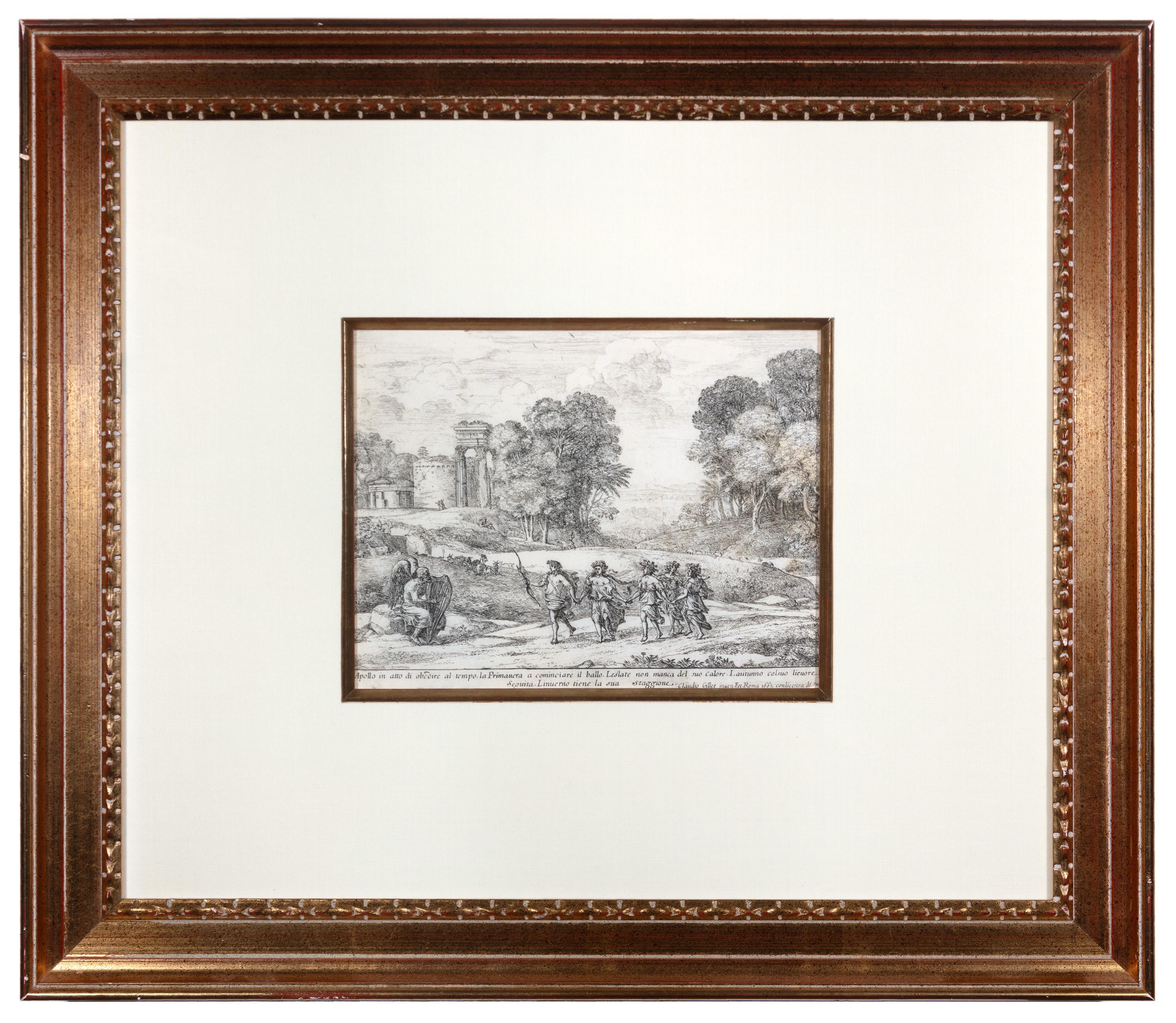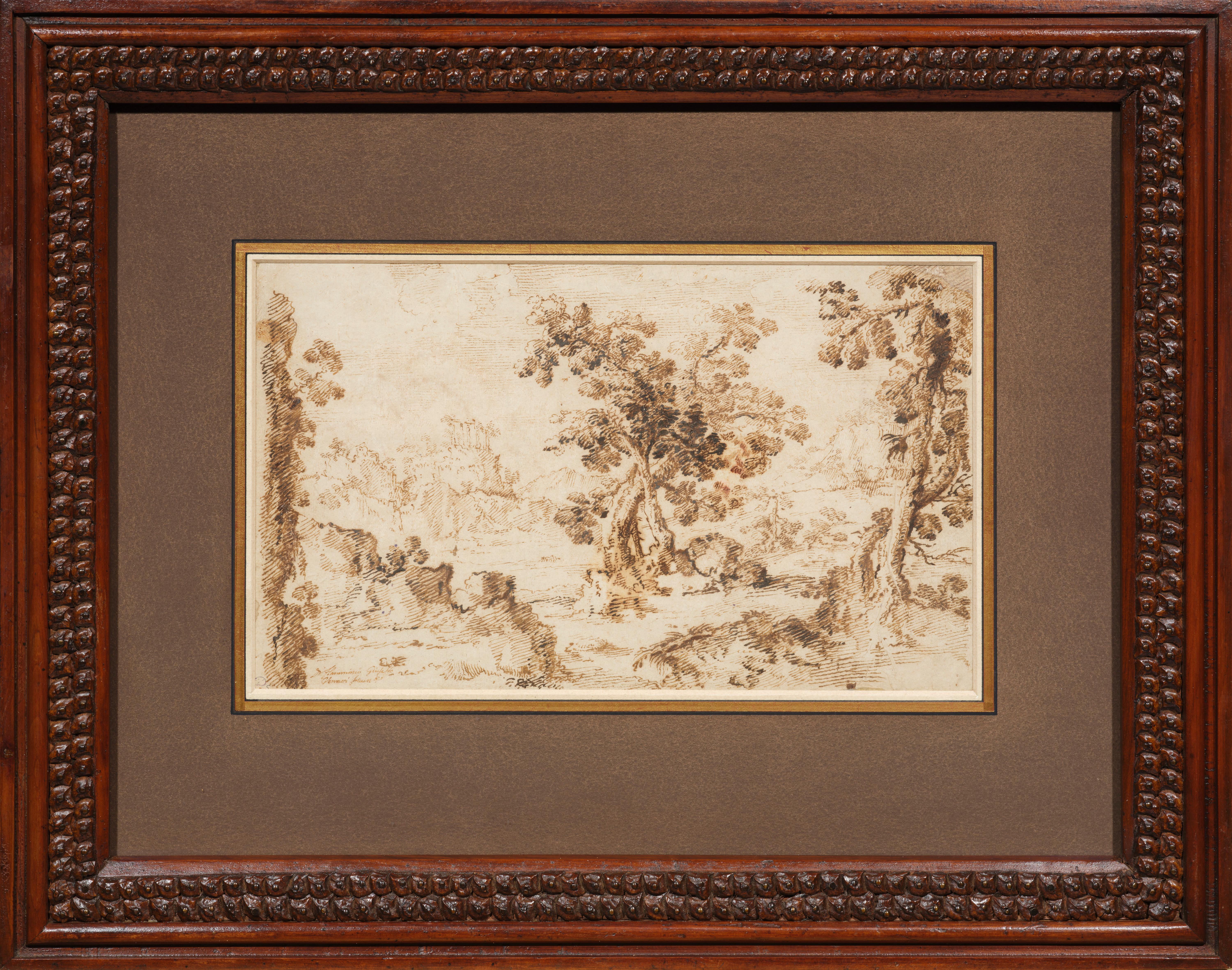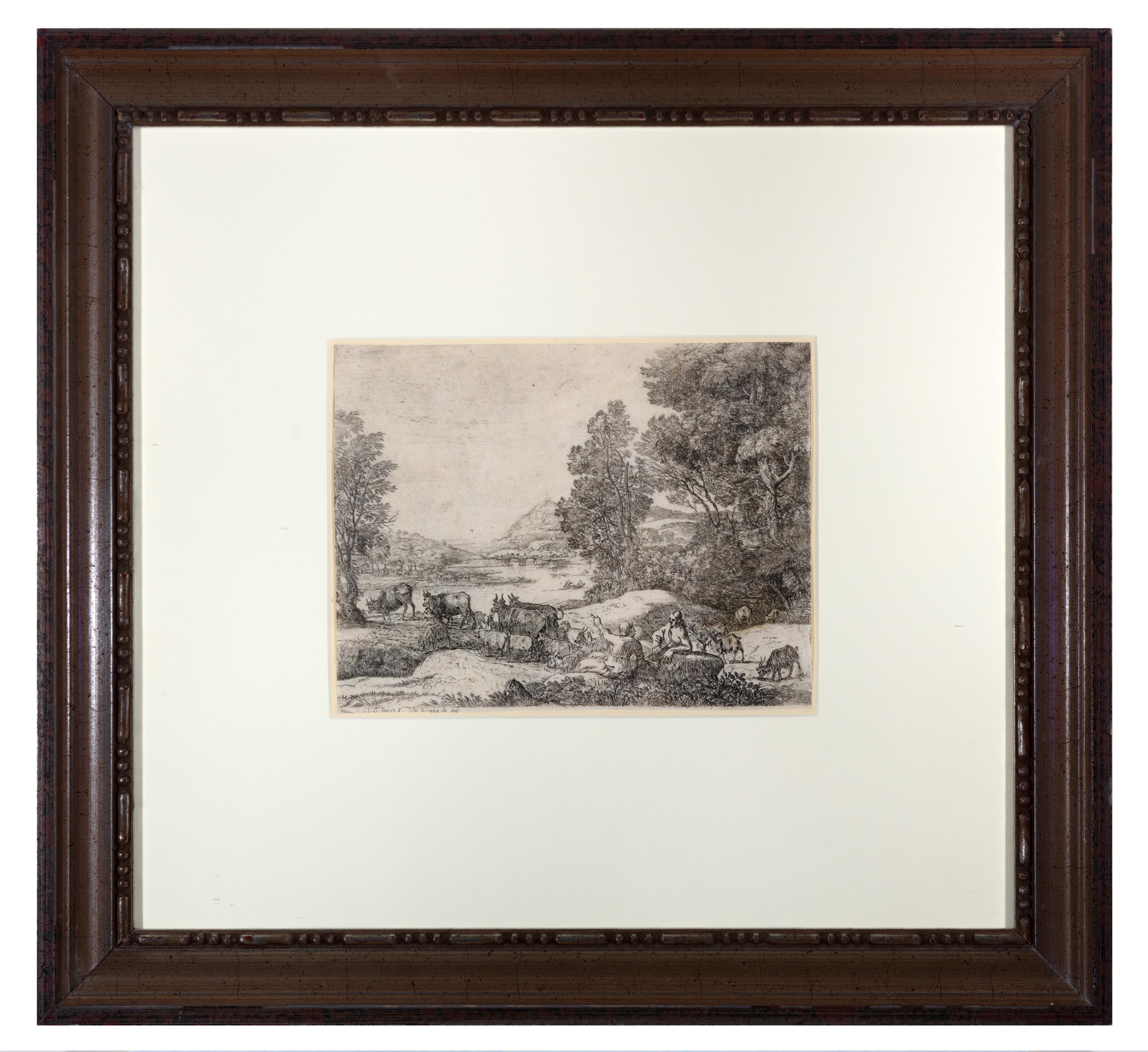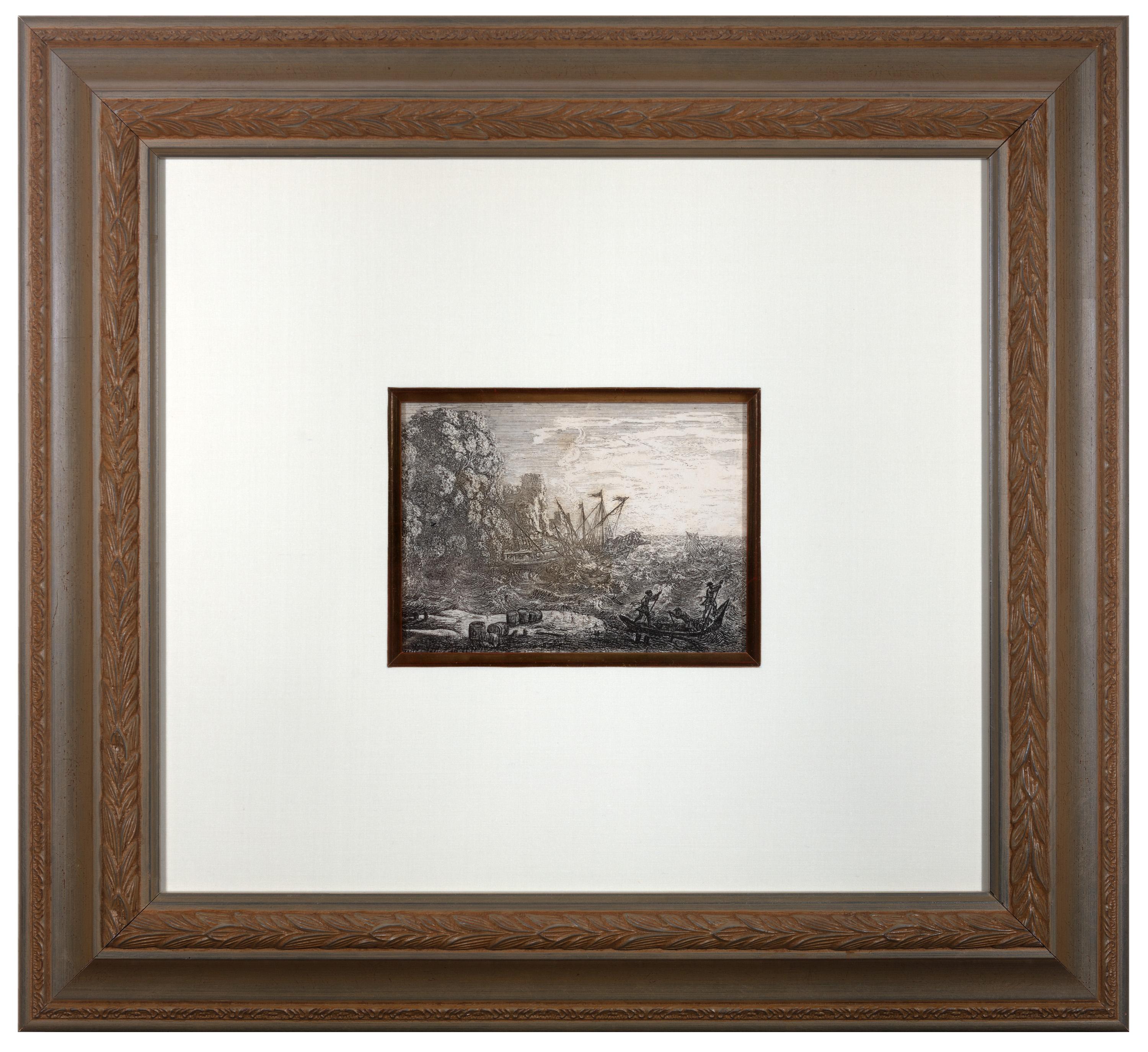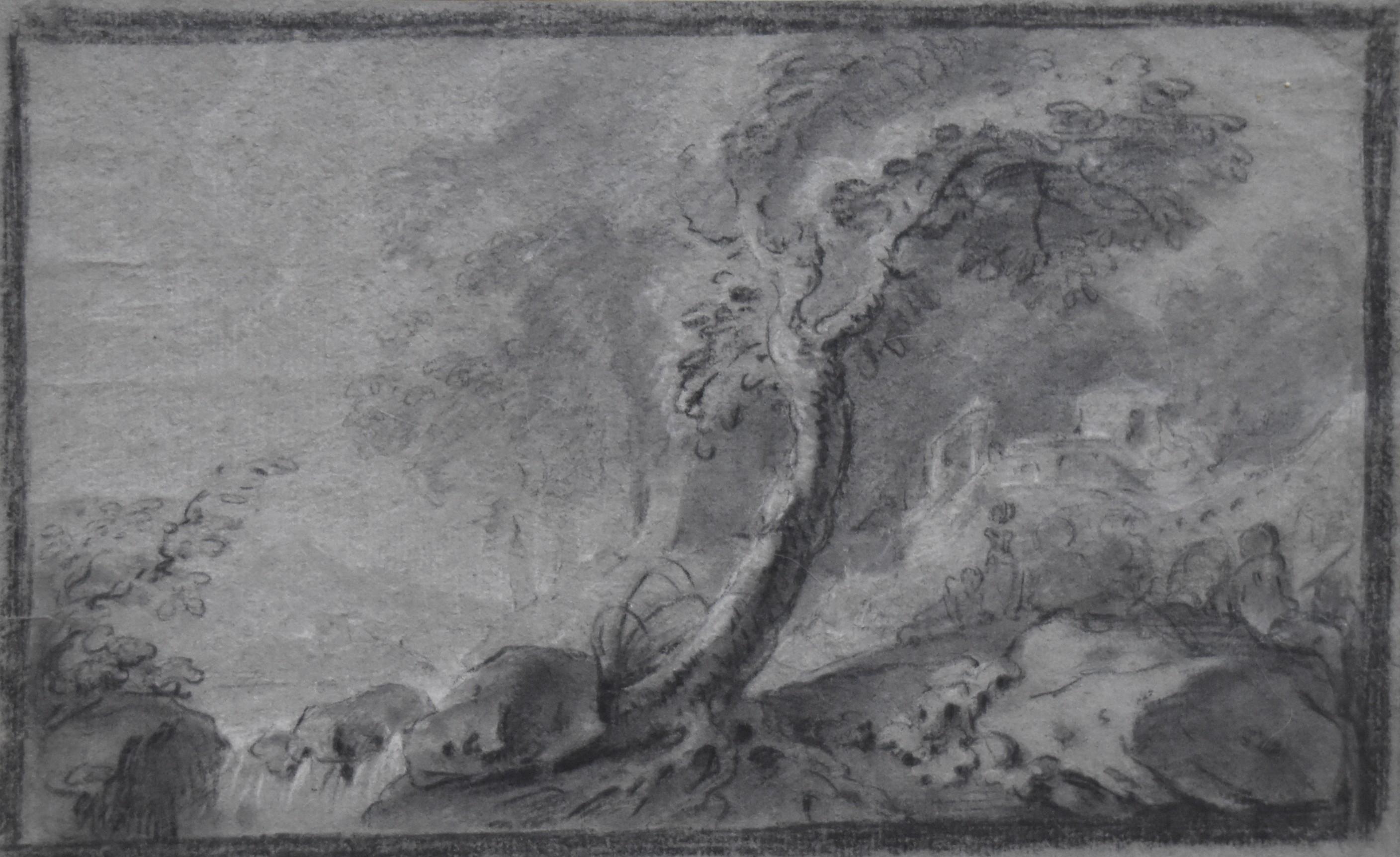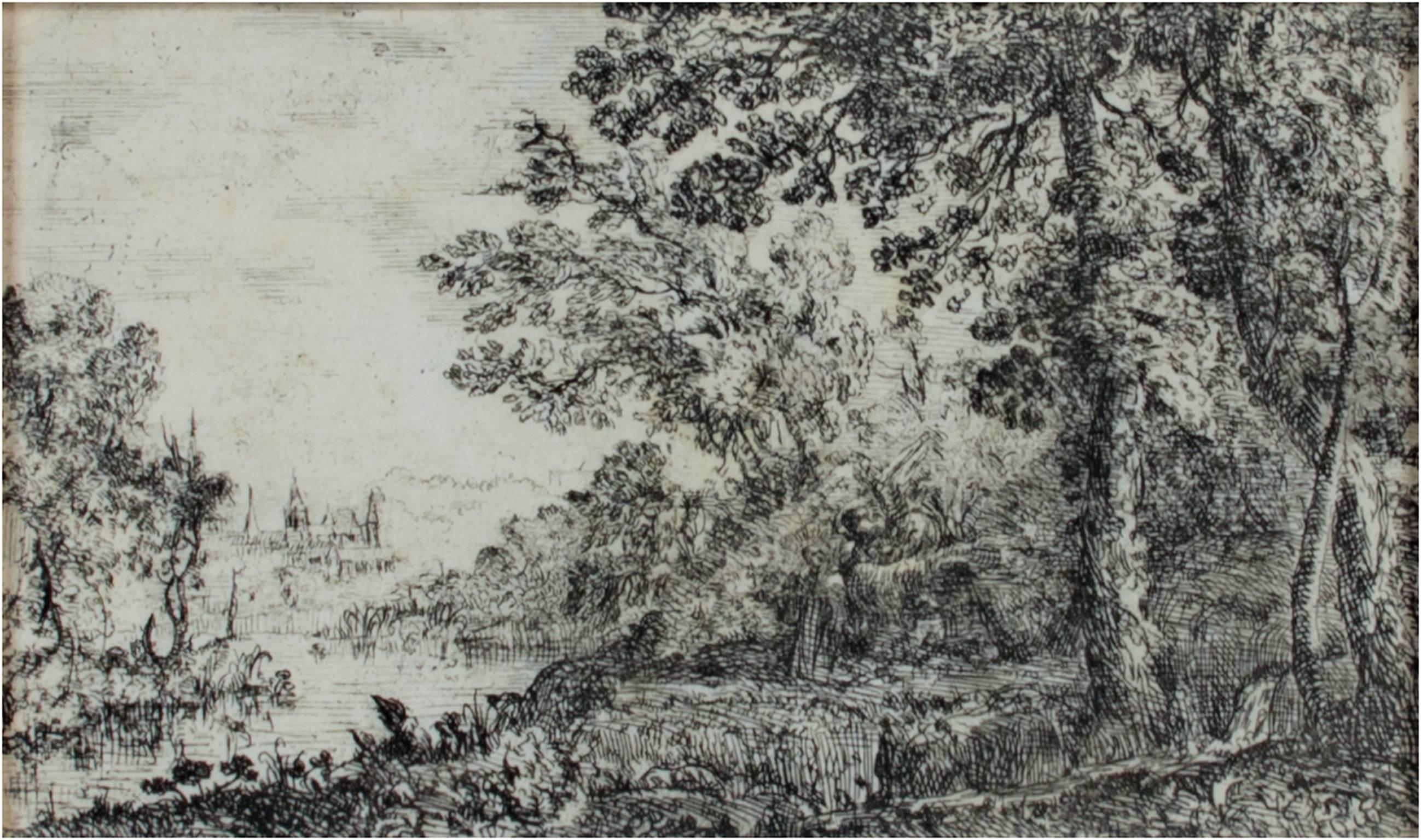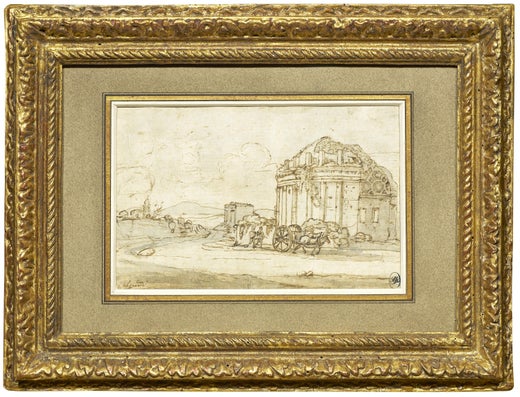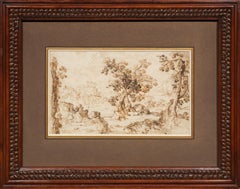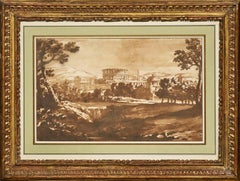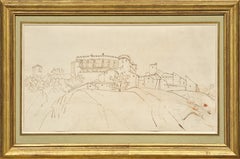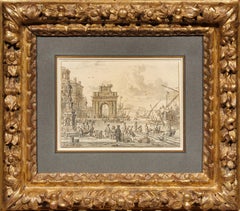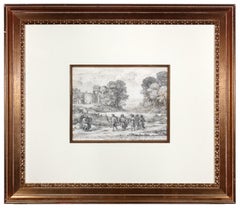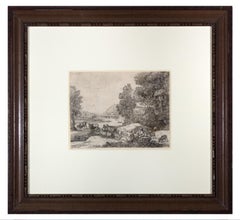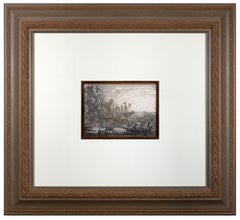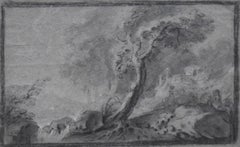This study presents a typical Roman countryside landscape: an ancient mausoleum in front of which a cart is passing by followed by two peasants. If the technique (a pen drawing on graphite lines, completed with a wash of brown and grey inks) and the signature inevitably evoke the art of Lorrain, we find on the verso of this drawing additional evidences that lead us to consider this unpublished drawing as a work by the master.
The motif of the mausoleum has been taken up in pen on the verso in a technique that can be found in several other drawings by Lorrain. There is also a study of three characters, which can be considered as preparatory to Lorrain’s painting entitled The Port of Ostia with the Embarkation of Saint Paula, leading us to claim this attribution with a dating of around 1639.
1. Claude Lorrain or the perfection of classical landscape in Rome in the 17th century
Claude Gellée was born in 1600 in Chamagne in Lorraine. Orphaned at the age of twelve, he spent a year with his brother in Freiburg, where the latter was a woodcarver. Claude Gellée then probably arrived in Rome in 1613, where he joined the workshop of Agostino Tassi (1580 - 1644) in 1617. Between 1619 and 1620 he studied for two years in Naples in the workshop of Goffredi Wals (who was himself a former pupil of Tassi).
In 1625 he returned to Lorraine for two years where he worked alongside Claude Deruet. He then returned to Rome, a city he never left for the rest of his life (except for short trips to the surrounding countryside).
From 1627 to 1650 he lived in Via Margutta. From 1635 onwards he became a renowned painter and commissions started to pour in. Considered during his lifetime as the most accomplished of the classical landscape painters, his reputation never faded.
Between 1629 and 1635 Le Lorrain often went to the Roman countryside to draw with his friend Joachim von Sandrart (1606 - 1686). He became a member of the Academy of Saint Luke in 1633, while being closely acquainted with the Bentvueghels, this guild which brought together the young Nordic painters active in Rome. In 1643 he joined the Congregation of the Virtuosi. In 1650 he moved to Via Paolina where he lived until his death.
Little is known of his intimate life. He seems to have had a daughter, Agnes, from an ancillary love affair. In 1657/ 1658 she moved in with him. Stricken with gout in 1663, he died in 1682.
2. Description of the drawing; the technique of nature studies
Two peasants are walking behind a horse-drawn cart on a road that winds through ancient tombs. While a rectangular tomb with a columned facade can be seen in the distance, the cart passes an important ancient building. It has a circular shape and its partially ruined façade is decorated with columns. The start of a second floor can be seen above a large entablature.
Executed entirely in pen with brown ink, the drawing was then completed with brown ink wash (in the foreground and in front of the horses), and with grey ink wash. Note the very delicate use of this grey wash, the intensity of which fades to create an atmospheric feeling towards the bluish background.
The nature studies constitute an important part of Lorrain's drawings. Generally done partly in the open air, they differ significantly from drawings related to paintings or constituted as independent works, which were done entirely in his studio.
Made from a preliminary graphite drawing (a trace of which can be seen in the middle of the path in front of the second tomb), these nature studies have a number of distinctive characteristics (which can be found here): a poorly defined foreground, a speedy execution, a simplicity of technical means and a clear focus on certain specific elements of the landscape (such as here the mausoleum and the cart). These studies were subsequently reworked in the studio: as an example, the foreground was completed by the introduction of a wash strip.
Finally, it should be noted that these studies are often signed, demonstrating Claude's concern for precision and the esteem in which he held his drawings.
3. The repetition of the motif on the verso by transparency: examples in the drawings of Claude Lorrain
Another fascinating feature of this drawing is that the artist drew a part of the main scene on the verso by transparency. To do this, the artist applied the recto of the sheet to a glass panel and drew the main lines on the verso with a pen, thus obtaining a perfectly inverted image.
The slightly dry character of the line ("the brittle duct of the pen", to use Marcel Roethlisberger's expression), can be explained by the position of the pen, held horizontally in front of a glass panel. A partial repetition of the motif on the verso appears in other drawings by Lorrain (422v, 482v, 575v in the Drawings Catalog, 17 and 19 in the Claude Lorrain Album).
As an example, we have reproduced below the drawing referenced under numbers 422 and 422v in the Catalog, which is kept in the British Museum in London.
4. On the verso, a preparatory study for The Port of Ostia with the Embarkation of Saint Paula (Prado Museum Madrid - last photo in our gallery)
While many drawings by Lorrain survive, few are preparatory studies for paintings, and the few surviving character studies are usually found, like in our drawing, on the verso of a landscape.
Saint Paula, a Roman matron, was left a widow with five children. In 385, she left Rome for Bethlehem to join Saint Jerome. She took only her daughter, St. Eustochia, who is probably the figure shown behind her in Claude’s painting. In the Middle East, she founded the Hieronymite order, renouncing civil life to serve God. This painting, kept in the Prado Museum in Madrid, is part of a commission of four paintings made by King Philip IV of Spain to Claude Lorrain in 1639-1640.
The three characters on the reverse of our drawing, lightly sketched in graphite and partly enhanced in pen, are most likely studies for Saint Paula and Saint Eustochia.
While the long toga covering St. Paula's head is quite characteristic, it is interesting to see the artist's progression between this drawing and the final painting, both in St. Paula's right hand resting on the arm (and no longer on the shoulder) of the young man before her, and in St. Eustochia's upraised arm, thus avoiding a repetition of her mother's attitude (who is making this same gesture with her left hand).
The comparison with this painting also leads us to date this drawing to around 1639, a period which, according to Roethlisberger, corresponds to the peak of the artist's pictorial vision in his nature studies.
5. Framing
We have chosen to frame this drawing in a carved and gilded wooden frame from the Louis XIII period. The mounting also allows the drawing to be seen on the verso and through the frame in transparency.
Main bibliographical references:
Marcel Roethlisberger - Claude Lorrain - The drawings Catalog - University of California Press Berkeley and Los Angeles 1968
Marcel Roethlisberger - the Claude Lorrain Album in the Norton Simon, Inc. Museum of Art - Los Angeles County Museum of Art 1971
Claude Gellée dit Le Lorrain - Catalogue of the exhibition at the National Gallery of Art in Washington DC and the Galeries nationales du Grand Palais, RMN 1983
(edited by Carel van Tuyll van Serooskerken and Michiel C. Plomb assisted by Federica Mancini) - Claude Gellée, dit le Lorrain - Le dessinateur face à la nature - Somogy Paris 2011
